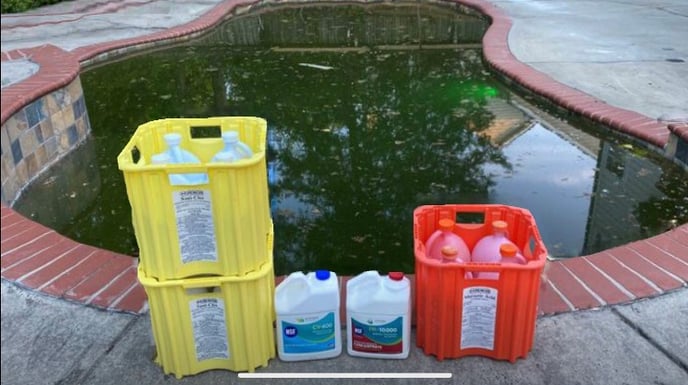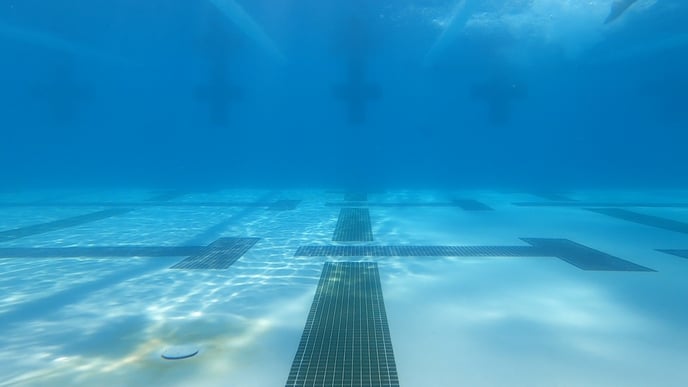What is a chlorine shock?
"Shock" is an over-used term in the pool industry. What does it actually mean?
The term "shock" is a verb, not a noun. To shock a pool is to add a high dose of chlorine at once. This gets confusing because there are also chlorine products on the market that are labeled "shock".
And it's not limited to one type of chlorine either...we have seen liquid chlorine "shock", cal hypo "shock", dichlor "shock", trichlor "shock", and even potassium monopersulfate, which is a "non-chlorine shock".
We know. It's confusing. Just remember that "shock" is an action (verb). It is the act of adding a lot of chlorine to the pool.
Shocking also has different interpretations. It is often used synonymously with superchlorination (or hyperchlorination). This does not necessarily have to be the case, but at least it's still describing the action of heavily chlorinating the pool. It is not up to us to define how much chlorine is used in your process of shocking a pool.
To expand on that point, why do we shock pools in the first place?

There are times when shocking is the right thing to do. Green pools, high combined chlorine, and other situations that are best resolved with elevated free chlorine are where shocking is appropriate.
But sadly, shocking has become a bad habit, used to fix just about anything. The more appropriate way to handle water chemistry problems is to first diagnose the root cause of those problems and address them head-on. Shocking is more reactive than proactive.
Shock alternatives
What if throwing more chlorine at a problem is not the right answer? There are several other ways to manage common problems we see. Some examples:

- White cloudiness in the water - Test the parameters of the LSI and figure out if the water has an LSI over +0.30 (purple). If so, this could be calcium carbonate coming out of solution because of the LSI violation. Shocking will do nothing for this. Instead, balance the LSI and consider SC-1000 to chelate calcium if you have not already added it earlier in the season.
- Oily, greasy, dirty, cloudy water - If the cloudiness is not pure white, it's likely from either a filtration issue (like channeling) or a very high chlorine demand. Check the filter and clean it if necessary. You can address the bulk of the oxidant demand by removing hydrocarbons and other non-living organics from water using CV-600 or CV-700 enzymes. If you have not built an enzyme residual with the initial purge dose, always start with the purge. Maintain weekly after that as needed, based on your bather load (and other organic loading, like leaves and grass clippings).
- Green water - Conduct the white bucket test any time you have green water. This will diagnose if it's an algae/organic issue that chlorine can handle or if it's from metals like copper. If the bucket of water gets darker when you chlorinate it, it's a metal issue, and you should NOT shock the pool. If it clears up, try our step-by-step green pool cleanup procedure.
- Can't hold free chlorine residual - Look at your oxidant demand levels and your cyanuric acid levels. For more guidance on optimizing chlorine efficiency, read this. In all likelihood, your water has some (or any combination) of these factors at play:
- Too much alkalinity (creates a high pH ceiling, which causes OCl- to leave CYA and get destroyed by sunlight),
- Too little CYA (5-15 ppm recommended for public/commercial pools, 30-50 ppm recommended for private/residential pools)
- Too much chlorine demand (most often it's a high oxidant demand, dominated by non-living organics and oils, and reproducing algae contributing to the sanitizer demand)
Whatever the pool issue is, always try to diagnose it before prescribing a solution. More often than not, shocking is not the best course of action. If you have specific issues, email photos of it to ask@orendatech.com and screenshot the Orenda Calculator™ with your water chemistry along with it. We'll do our best to help you troubleshoot your pool.